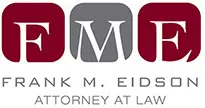In Florida negligence cases, determining whether a legal duty exists is often a complex and contested issue. The Florida Supreme Court has developed the Florida foreseeable zone of risk, which is a concept that refers to finding the potential “danger zone” that a reasonable individual should be able to predict based on the circumstances of a situation. This concept has been widely criticized for its expansive application in Florida courts, due to its potential to blur the lines between foreseeability and duty. Let’s touch on what this zone of risk is and how it is determined, what its history and precedent look like, and why you want a skilled attorney if your business is involved in a case where the zone of risk is being applied.

What Is The Foreseeable Zone of Risk in Florida?
The foreseeable zone of risk in Florida is a concept used in personal injury law to determine whether a defendant should have anticipated the risk of harm to the plaintiff. In Florida, the foreseeable zone of risk is defined as, the area surrounding a dangerous condition within which it is reasonably foreseeable that a person might be injured as a result of that condition, which means that if a defendant creates or maintains a dangerous condition, they may be liable for any harm that occurs within that zone of risk.
Legal History & Precedent of Florida’s Foreseeable Zone of Risk
While the notion of Florida's foreseeable zone of risk has no clear lineage, according to the Florida Bar, it was first enunciated in Kaisner v. Kolb, 543 So. 2d 732 (Fla. 1989) and from here became the supporting authority for determining legal duty in McCain v. Florida Power Corp., So 2d 500 (Fla. 1992). While vague remarks around the foundation of foreseeability did occur in prior cases to the McCain v. Florida Power Corp., -- in Stevens v. Jefferson, 436 So. 2d 33 (Fla. 1983) which then cites Crislip v. Holland, 401 So. 2d 1115 (Fla. 4th DCA 1981) -- it isn’t until McCain v. Florida Power Corp., So 2d 500 (Fla. 1992) and its landmark ruling, that we see this concept create a profound precedent on negligence law with far-reaching implications in the state of Florida.
A Summary Of What Happened In The McCain v. Florida Power Corp., Ruling
In the case of McCain v. Florida Power Corp., Thomas McCain was injured when the blade of a trencher he was operating hit an underground electrical cable belonging to Florida Power Corporation. The district court reversed a jury verdict in favor of McCain, finding that the injury was not foreseeable, and ordered a directed verdict for Florida Power. However, the Supreme Court of Florida found that Florida Power had a duty to take reasonable action to prevent the type of injury that occurred and that there was sufficient evidence to suggest Florida Power breached this duty.
The court clarified that foreseeability is relevant both to the determination of duty and proximate causation, and that blurring the distinction between the two would be incorrect. This case established the concept of Florida's foreseeable zone of risk, which is used to determine a defendant's duty to protect a plaintiff from harm. The jury awarded McCain a verdict of $175,000, including a thirty-percent reduction for McCain's comparative negligence.
Duty of Care & Florida’s Foreseeable Zone of Risk Determined
In Florida, a person who causes injury to another may be liable for negligence if they breached a duty of care that they owed to the injured party. However, not every person owes a duty of care to every other person. The duty of care is determined by Florida’s foreseeable zone of risk, which is the area within which a reasonable person would anticipate that harm might occur as a result of their actions or omissions. The foreseeable zone of risk is not fixed or rigid, but rather depends on the facts and circumstances of each case. The court will consider factors such as the nature and extent of the harm, the relationship between the parties, the foreseeability of the harm, and the public policy implications of imposing a duty of care.
Examples Involving Florida’s Zone of Risk
Before we outline some historical cases involving Florida’s foreseeable zone of risk, here are some everyday examples that outline how foreseeability works in negligence cases:
- If a driver runs a red light at an intersection and causes a car accident with another vehicle that was crossing through the intersection, the driver owes a duty of care to the other driver and any passengers or pedestrians who are within the foreseeable zone of risk created by the driver’s violation of the traffic laws. However, if the driver runs a red light and hits a power line, causing a blackout in a nearby neighborhood, he or she may not have created a foreseeable zone of risk that includes those affected by the blackout.
- If a homeowner fails to repair a broken stairway railing, and then proceeds to invite a guest over for dinner, the homeowner owes a duty of care to the guest and any other visitors who may need to use that stairway. It can be shown that it is “known” or “foreseeable” that if this stairway goes unrepaired, eventually someone will become injured due to the homeowner’s negligence in maintaining their premises.
- A manufacturer, who produces a product with a latent defect that could cause harm to consumers or bystanders outside the manufacturer’s premises, can still be liable under the foreseeable zone of risk in Florida. For instance, if a manufacturer sells a car that has faulty brakes, and the car crashes into a pedestrian on the street, the manufacturer may be liable for the pedestrian's injuries. This is because the manufacturer's conduct created a foreseeable zone of risk that posed harm to others, and the manufacturer had a duty to either lessen the risk or take sufficient precautions to protect others from the harm.
Some historical cases involving Florida’s foreseeable zone of risk include Kitchen v. K-Mart Corp., 697 So. 2d 1200 (Fla. 1997), where the court found that selling a firearm to an intoxicated person created a foreseeable zone of risk and imposed a legal duty on the retailer; Henderson v. Bowden, 737 So. 2d 532 (Fla. 1999), where the court held that directing an intoxicated driver to move a vehicle to another location created a foreseeable zone of risk, imposing a legal duty on the defendant; and Curd v. Mosaic Fertilizer, LLC, 39 So. 3d 1216 (Fla. 2010), where the court found that the storage and handling of pollutants or hazardous materials created a foreseeable zone of risk, imposing a legal duty on the defendant.
Criticisms Of The Foreseeable Zone of Risk in Florida
When looking at Florida’s foreseeable zone of risk standard, the criticisms associated with it relate to how out of step it is with national jurisdictions, and how it acts contrary to traditional principles of negligence law which already recognize foreseeability. The main takeaway here is that foreseeability should not be the sole determinant of the existence of a legal duty. Common criticisms include
1. Florida’s foreseeable zone of risk standard conflates foreseeability with duty, which are two distinct elements of negligence. Foreseeability is a factual question that depends on the circumstances of each case, while duty is a legal question that depends on the policy considerations of imposing liability. By using foreseeability as the sole criterion for duty, the Florida Supreme Court has ignored other relevant factors, such as the relationship between the parties, the nature of the harm, and the social utility of the conduct.
2. The foreseeable zone of risk in Florida is a concept that is inconsistent with traditional categories of landowner liability. Under this standard, a landowner may be liable for injuries to invitees that occur off his premises, if his conduct created a foreseeable zone of risk beyond his property boundaries. This contradicts the general principle that a landowner's duty is limited to his premises and does not extend to adjacent or surrounding areas. Moreover, this standard creates uncertainty and confusion for landowners who do not know how far their duty extends or what conduct may create a foreseeable zone of risk.
3. Another criticism is that the foreseeable zone of risk standard leads to unjust results, as it may impose liability on a person who did not cause or foresee harm, but merely created a condition that increases the risk of harm by a third party.
This standard has been challenged and rejected by other jurisdictions that have adopted different tests for determining duty in negligence cases.
How A Skilled Attorney Can Help in Cases Involving The Florida Zone of Risk
If you have suffered an injury in Florida due to someone else's negligence, you may be entitled to compensation for your damages. However, proving negligence can be challenging, especially when it involves the concept of the foreseeable zone of risk. A skilled attorney can help you with your personal injury case by establishing that the other person breached their duty of care and that your injury was within the foreseeable zone of risk created by their conduct. This may involve gathering evidence, interviewing witnesses, consulting experts, and presenting arguments in court. If you need help with a personal injury case involving Florida’s foreseeable zone of risk, contact Frank Eidson today for a free case review at 407-245-2887 or book an appointment on the site: https://www.frankeidson.com/.








